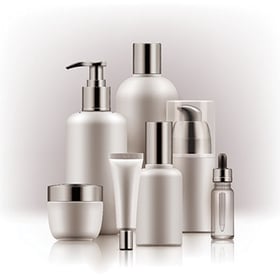 Total Organic Carbon (TOC) analysis is a process used by environmental, pharmaceutical, university and petrochemical labs to determine water cleanliness and purity. It is required analysis by international pharmacopoeia for water, wastewater and soils applications. It is also starting to find traction in other industries such as cosmetics, even though there is not a regulatory requirement to use the technique.
Total Organic Carbon (TOC) analysis is a process used by environmental, pharmaceutical, university and petrochemical labs to determine water cleanliness and purity. It is required analysis by international pharmacopoeia for water, wastewater and soils applications. It is also starting to find traction in other industries such as cosmetics, even though there is not a regulatory requirement to use the technique.
An article written by Ben Dingwall, a business manager at TRB Chemedica, cites the focus on quality and safety within the cosmetics industry as the reason why TOC is being used more frequently. Adoption of this purification technique is driven by a number of cosmetics companies that are “aligning the process with Current Good Manufacturing Practices (cGMP).” These best practices help companies meet established guidelines recommended by agencies that authorize and license them to manufacture and sell cosmetics.
Meeting cGMPs provide a variety of benefits for cosmetics business, including an assurance of quality with documented and controlled procedures; differentiation from competitors that provide customer reassurance and branding associated with quality; and harmonization with ISO 22716 certification. ISO 22716, which establishes standards for the production, control, storage and shipment of cosmetic products, were adopted by the International Cooperation on Cosmetics Regulations (ICCR), an international group of cosmetics regulatory authorities that meet annually to review cosmetics safety and regulatory issues.
Within ISO 22716 standards are guidelines for quality of water used in production. Water systems should provide a “defined quality of water,” and “water quality should be verified by testing or monitoring.” The FDA also provides guidance on water quality for manufacturing cosmetics:
You should determine whether:
- The water used as a cosmetic ingredient is used as-is (i.e., directly from the tap) or if it has been treated before being used (i.e., has it been treated by such means as deionization, distillation, or reverse osmosis)
- There are established procedures for ensuring that the water used as a cosmetic ingredient
- Is of a defined quality
- Is not affected by materials used in the water treatment equipment
- Is being tested or monitored regularly to verify that it meets applicable chemical, physical, and microbiological specifications for quality; and
- The entire system for supplying water used as a cosmetic ingredient is set up to avoid stagnation and risks of contamination (This system should be routinely cleaned and sanitized according to an appropriate SOP that ensures no biofilm build-up.)
Given the importance of water quality and purity in cosmetics products, adopting TOC analysis can help ensure and document that a defined quality of water is used in the manufacturing process. Among the other benefits of TOC monitoring and testing, Dingwall listed:
- Strengthens the quality of the end product,
- Reduces the chance that contamination goes undetected,
- Reduces the risk of product loss and any financial implications if contamination is detected post production
- Ensures cleaning process is working consistently and without risk
- Ensures process consistency and integrity
- Helps organizations meet cGMP and ISO 22716 standards and guidelines
- Reinforces internal quality assurance
For more information about TOC analysis techniques and recommended instruments for your applications, download Teledyne Tekmar’s new guide, Total Organic Carbon (TOC) Analysis Technique Comparison